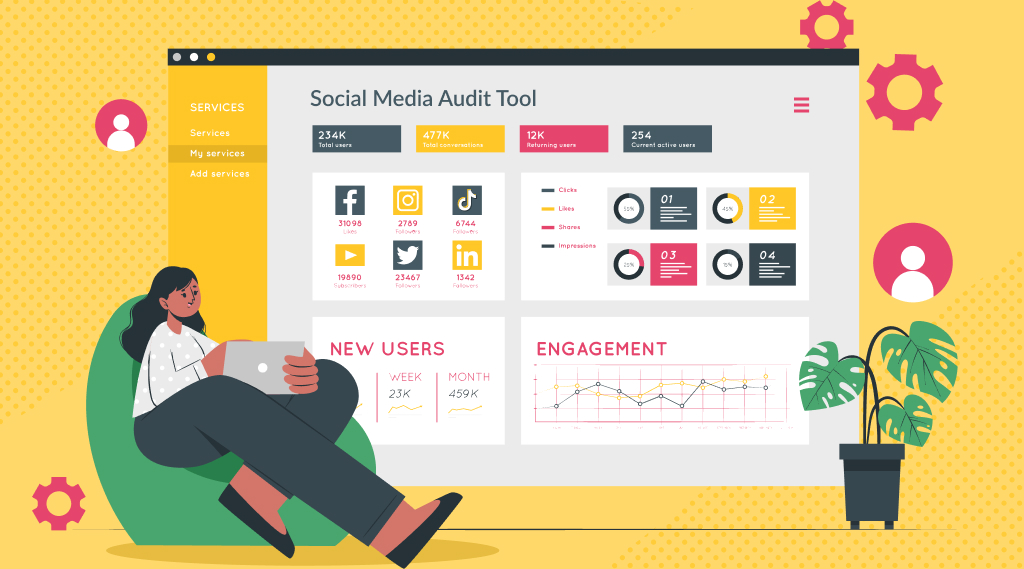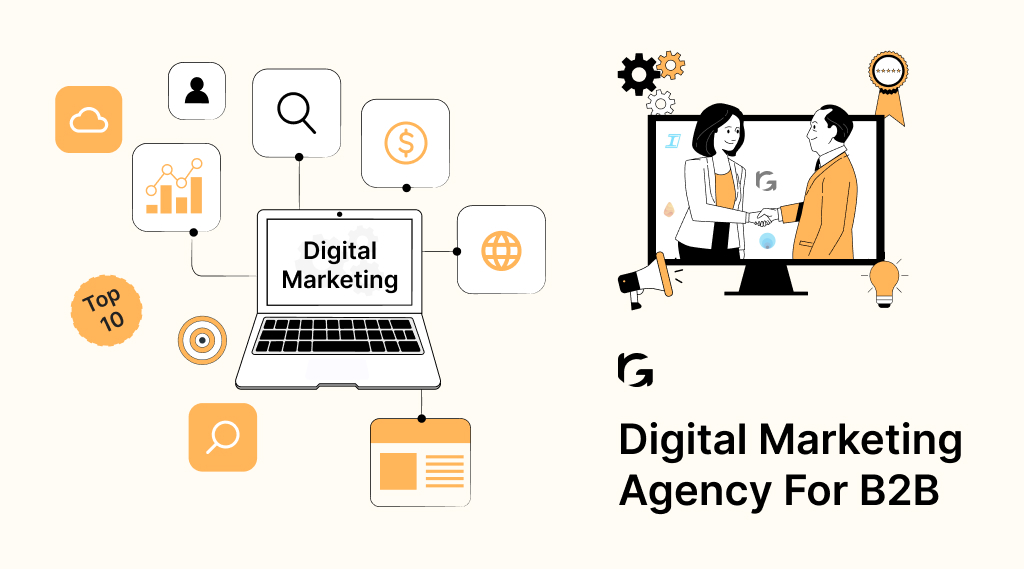Social media is everywhere. It helps businesses connect with their customers, build brand awareness, and drive sales. With so many social media platforms available, it can be challenging for businesses to keep track of their social media presence, performance, and strategies. This is where a social media audit comes in!
A social media audit can help businesses enhance their marketing strategies. By using social media audit tools and templates, businesses can gain valuable insights into their social media analytics, audience demographics, content performance, and competitor analysis.
In this article, we’ll explore seven free social media audit tools for improving your performance. So let’s dive in!
What is social media audit?
A social media audit is analyzing your social media accounts to see how well they’re doing. Imagine it’s a check-up for your online presence. You want to know what’s working, what needs improvement, and what you can do to make things better.
So, during a social media audit, you’re going to look at things like:
- The number of followers you have
- What kind of posts get the most attention
- How people are interacting with your content.
It’s like taking a step back and looking at the big picture of your social media game.
Now the question is how do you do social media audits ? The answer is simple, with the help of social media tools. Let’s understand what exactly is a social media audit tool?
What is a social media audit tool?
A social media tool is a platform that helps users to create, share, and engage with content, ideas, and other forms of expression through virtual communities and networks. Now let’s understand some important benefits of having social media tools.
Benefits of social media audit tools
A social media audit tool provides various benefits for businesses, including:
- Identifying areas to focus resources for better results
- Removing guesswork and providing authentic, transparent, objective advice
- Enabling businesses to pinpoint where their investment is going and assess its effectiveness
- Providing a systematic approach to conducting social media audits, saving time and improving efficiency
- Offering valuable insights into social analytics, competitor analysis, audience demographics, and content performance
- Helping businesses stay on top of their social media presence, track progress, and make informed decisions
- Enabling B2B SaaS businesses to refine their social media strategy, optimize their social media presence, and achieve marketing goals
- Providing a structured framework for evaluating and analyzing social media presence, performance, and strategies
- Enabling businesses to identify strengths, weaknesses, and opportunities for improvement
7 Free social media audit tools for optimizing performance
A social media audit tool is a software or platform designed to help individuals, marketers, and businesses analyze and evaluate their social media accounts and strategies.
These tools are used to gather data and insights about the performance of social media profiles across various platforms (such as Facebook, Instagram, X, LinkedIn, etc.), helping users understand their online presence, audience engagement, content effectiveness, and overall social media performance.
Let’s explore seven of the best free tools that will empower you to optimize your social media performance.
- Google analytics
- Facebook insights
- X analytics
- Instagram insights
- LinkedIn analytics
- YouTube analytics
- Hootsuite social media audit tool
Let us understand each of them in detail:
1. Google analytics:
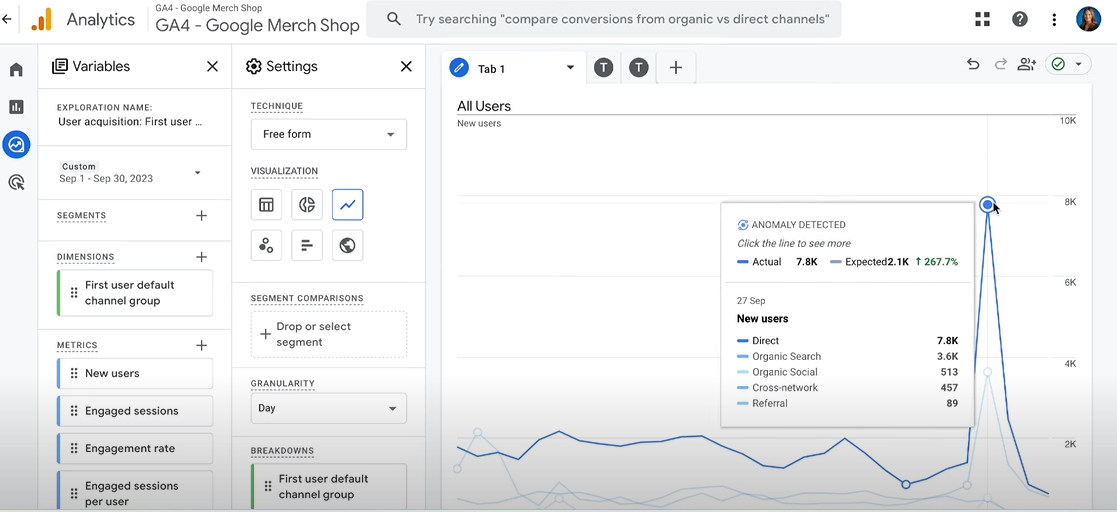 Google Analytics is a powerful, comprehensive web analytics tool that, while not exclusively for social media, offers valuable insights into how social media drives traffic to your website.
Google Analytics is a powerful, comprehensive web analytics tool that, while not exclusively for social media, offers valuable insights into how social media drives traffic to your website.
Key features:
- Social referral traffic: Track which social platforms drive the most traffic to your website.
- User behavior analysis: Understand how users from social media interact with your website.
- Conversion tracking: Measure the impact of social media on website goals and conversions.
2. Facebook insights:
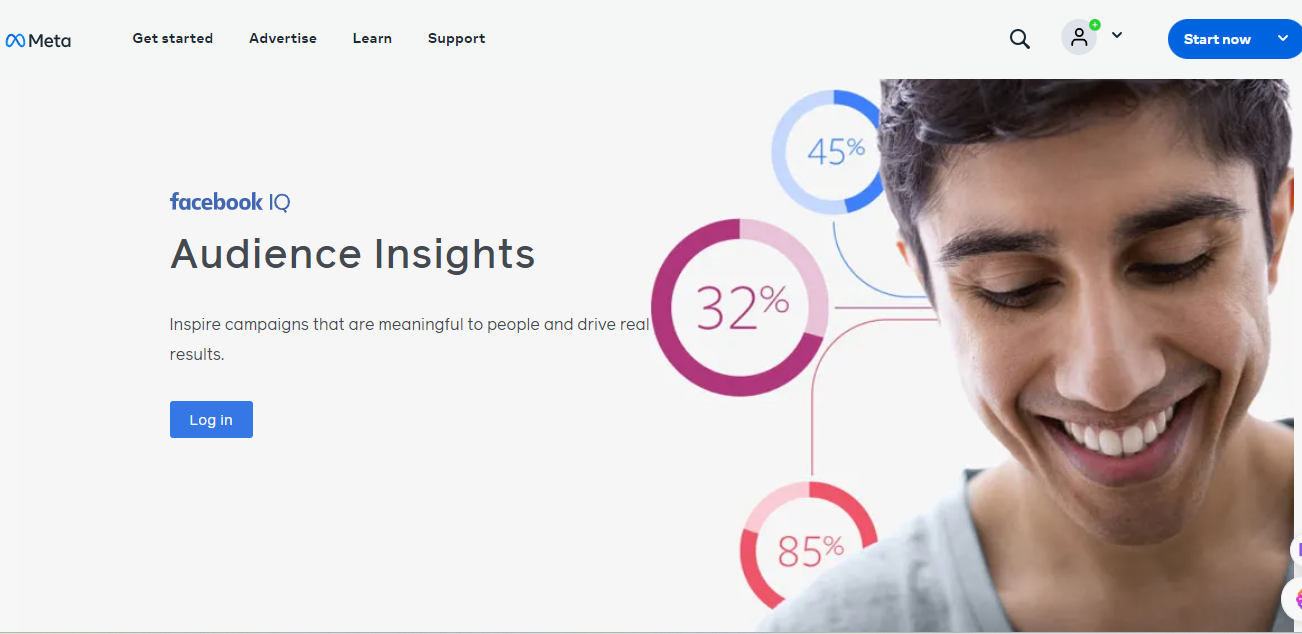 Facebook Insights provides detailed analytics for your Facebook Page. It offers a wealth of data including metrics on page views, likes, engagement rates, reach, and the performance of individual posts.
Facebook Insights provides detailed analytics for your Facebook Page. It offers a wealth of data including metrics on page views, likes, engagement rates, reach, and the performance of individual posts.
Key features:
- Audience Insights: Understand the demographics and interests of your Facebook audience.
- Post Performance: Analyze the reach, engagement, and reactions to individual posts.
- Competitor Benchmarking: Compare your Page’s performance to competitors in your industry.
3. X analytics:
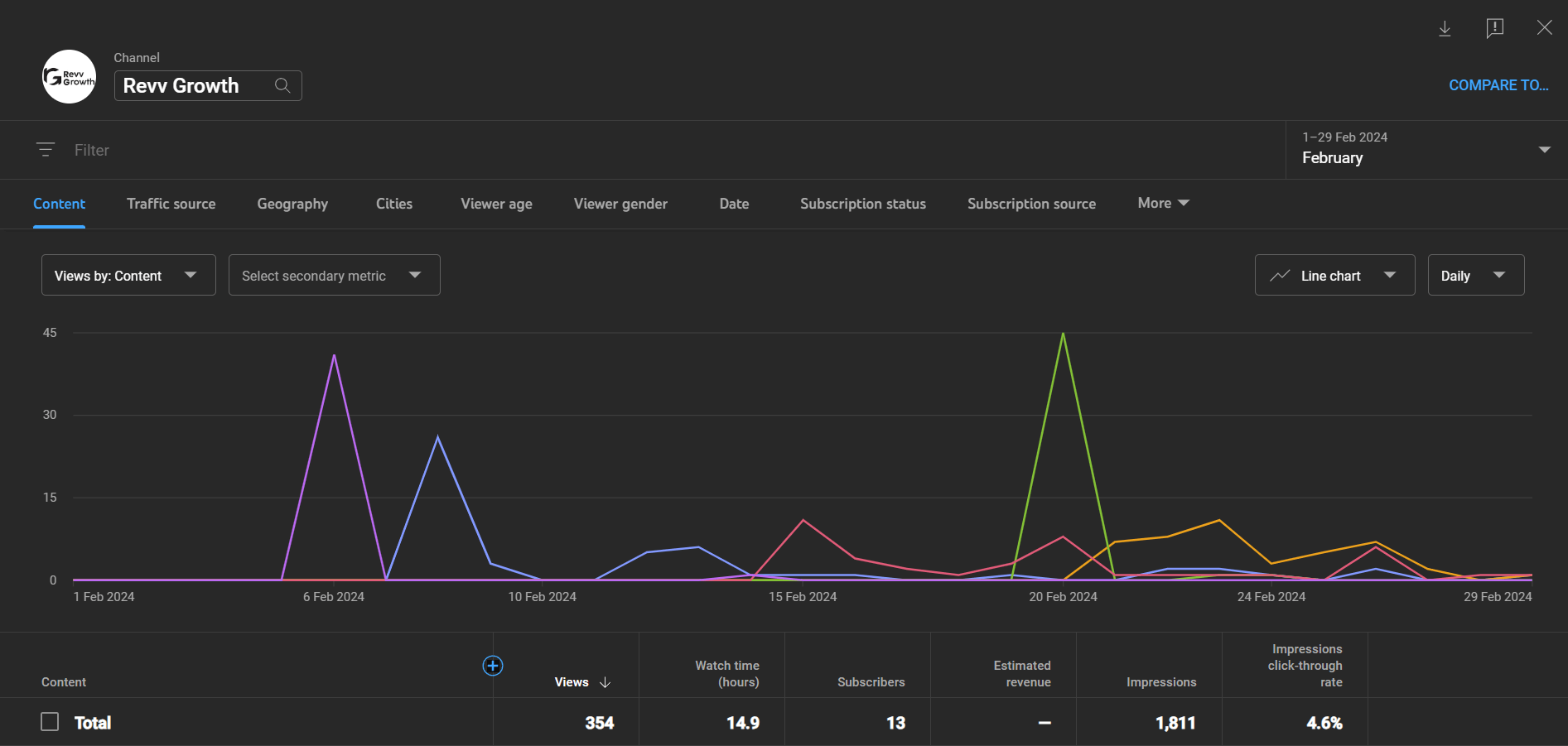 X Analytics offers a detailed view of your account’s performance, presenting metrics such as tweet impressions, engagements, and growth in followers.
X Analytics offers a detailed view of your account’s performance, presenting metrics such as tweet impressions, engagements, and growth in followers.
Key features:
- Engagement metrics: Track likes, retweets, and replies for individual tweets.
- Follower demographics: Understand the characteristics of your X audience.
- Tweet performance over time: Analyze the effectiveness of your tweets over different time periods.
4. Instagram insights:
Instagram Insights provides analytics for your Instagram business or creator account, offering data on followers’ demographics, post impressions, saves, and engagement details.
Key features:
- Engagement data: Analyze likes, comments, and shares for posts and stories.
- Audience Demographics: Understand the age, location, and gender of your Instagram followers.
- Content Interaction Metrics: Evaluate the performance of individual posts and stories.
5. LinkedIn analytics:
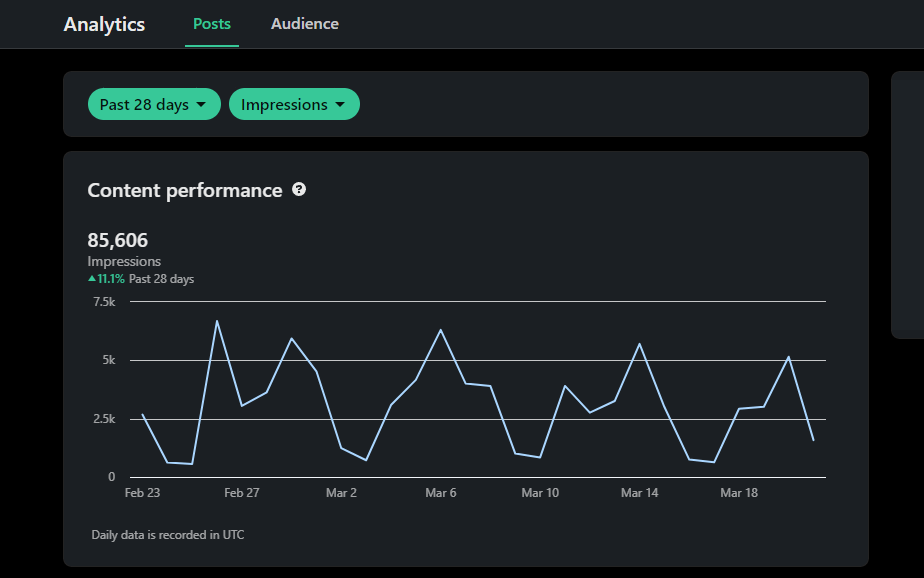
LinkedIn Analytics for company pages offers insights into the performance of your posts, engagement rates, follower demographics, and how your page stacks up against similar pages.
Key features:
- Follower demographics: Understand the professional characteristics of your LinkedIn audience.
- Content engagement metrics: Analyze the reach and engagement of your posts.
- Page views and visitor analytics: Track how users discover and interact with your LinkedIn Page.
6. YouTube analytics:
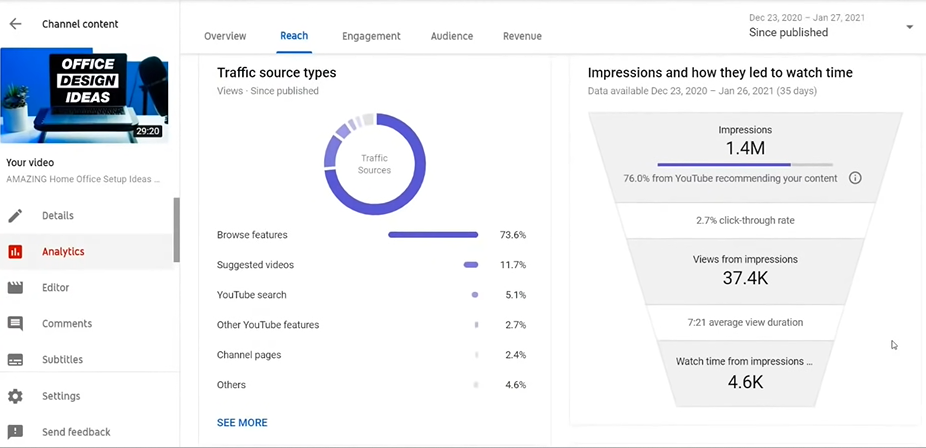 YouTube Analytics offers detailed metrics for optimizing your YouTube channel’s content strategy.
YouTube Analytics offers detailed metrics for optimizing your YouTube channel’s content strategy.
Key Features:
- Video Metrics: Track views, watch time, and subscriber data for individual videos.
- Audience Demographics: Understand the age, gender, and location of your YouTube audience.
- Traffic Sources: Identify where your YouTube traffic is coming from.
7. Hootsuite social media audit tool:
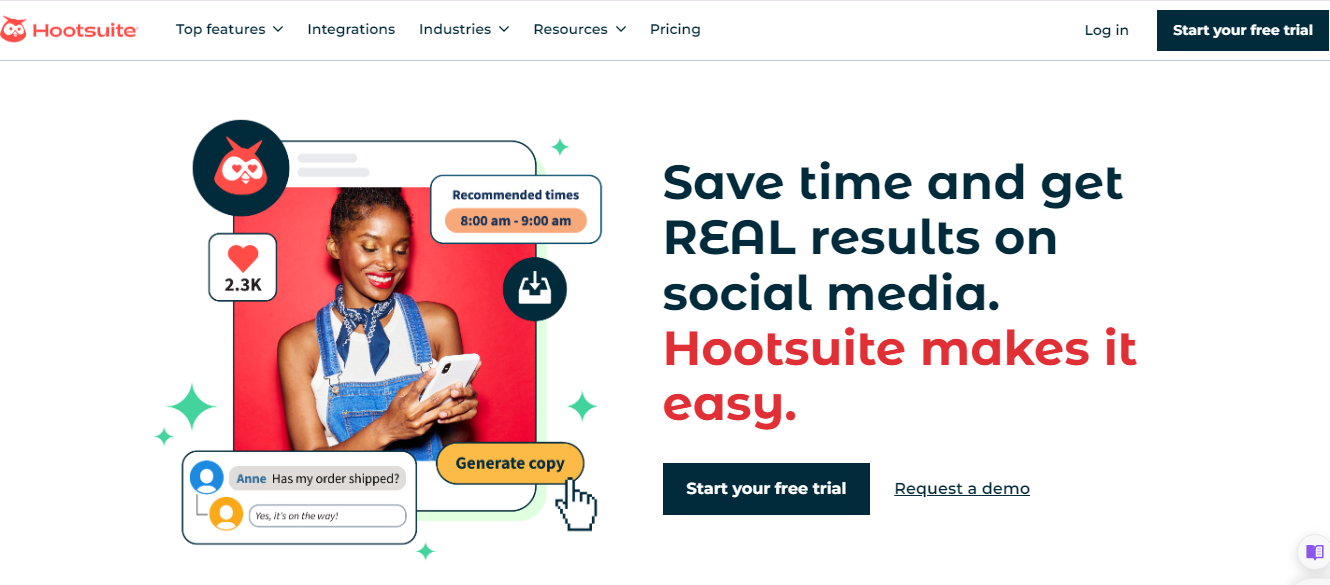 Hootsuite’s audit tool helps evaluate your overall social media performance across various platforms.
Hootsuite’s audit tool helps evaluate your overall social media performance across various platforms.
Key features:
- Account Health Check: Assess the overall health and activity of your social media accounts.
- Post Performance Analysis: Evaluate the engagement and reach of your recent posts.
- Audience Engagement Metrics: Understand how your audience is interacting with your content.
How to use these tools in your audit?
- Integration: Connect these tools to your social media accounts for seamless data gathering.
- Data analysis: Regularly review metrics to identify trends and patterns.
- Benchmarking: Compare your performance metrics against industry benchmarks and competitors.
- Adjust strategies: Use insights to refine your content, posting schedule, and engagement strategies.
- Set goals: Establish measurable goals based on audit findings for continuous improvement.
By leveraging these free tools strategically, you can conduct an in-depth social media audit, gain actionable insights, and refine your strategies to optimize performance in 2024.
10 Steps to perform a social media audit
Performing a social media audit is a critical process for any business or individual looking to optimize their online presence and engagement. Here are 10 steps to guide you through the process of conducting a thorough social media audit:
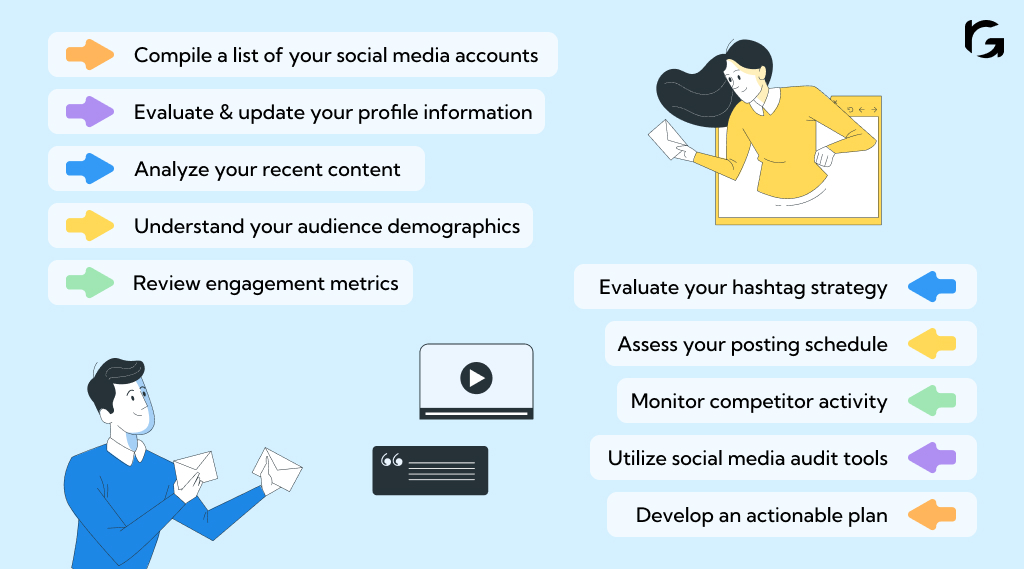
- Compile a list of your social media accounts
- Evaluate and update your profile information
- Analyze your recent content
- Understand your audience demographics
- Review engagement metrics
- Evaluate your hashtag strategy
- Assess your posting schedule
- Monitor competitor activity
- Utilize social media audit tools
- Develop an actionable plan
Let’s dive a bit deeper into each step for a more informative guide on conducting a social media audit:
1. Compile a list of your social media accounts
Why it matters: Begin by creating a comprehensive list of all your active social media accounts. Include major platforms like Facebook, Instagram, Twitter, LinkedIn, Pinterest, and any others relevant to your brand.
2. Evaluate and update your profile information
Why it matters: Your profile is often the first point of contact for visitors. Review and update your profile information, ensuring consistency in branding across platforms. Verify that your bio, profile pictures, and contact details are accurate and reflect your current brand identity.
3. Analyze your recent content
Why it matters: Examine your recent posts to identify high-performing content. Look for patterns in the type of content that receives the most engagement. This analysis will inform your content strategy by highlighting what resonates with your audience.
4. Understand your audience demographics
Why it matters: Dive into the demographics of your audience. Platforms often provide insights into age, location, and interests of your followers. Understanding your audience helps tailor content to better meet their preferences.
5. Review engagement metrics
Why it matters: Gauge the success of your content by analyzing engagement metrics. Track likes, comments, shares, and other interactions to understand how well your audience is engaging with your posts.
6. Evaluate your hashtag strategy
Why it matters: Assess the effectiveness of your hashtag strategy. Identify which hashtags are contributing to increased visibility and engagement. Consider adjusting or refining your use of hashtags based on performance.
7. Assess your posting schedule
Why it matters: Analyze when your audience is most active. This data helps optimize your posting schedule for maximum visibility and engagement. Experiment with different posting times and days to find the most effective schedule for your audience.
8. Monitor competitor activity
Why it matters: Keep an eye on your competitors’ social media presence. Analyze their successful strategies and learn from their mistakes. This competitive analysis can provide valuable insights into effective approaches within your industry.
9. Utilize social media audit tools
Why it matters: Incorporate the use of social media audit tools to streamline the analysis process. In our guide, we’ll introduce you to seven free tools designed to simplify the measurement of key performance indicators (KPIs) and provide actionable insights.
10. Develop an actionable plan
Why it matters: Based on your audit findings, create a detailed action plan. Specify the changes you’ll implement, new strategies you’ll explore, and improvements you’ll make to enhance your overall social media performance.
By following these steps and utilizing the recommended tools, you’ll not only conduct a thorough social media audit but also lay the foundation for a more effective and targeted social media strategy.
Example of an effective social media audit
Below are examples of what you might find or analyze during a social media audit:
1. Content performance:
Finding: Video content consistently receives higher engagement than image or text-based posts.
Analysis: Consider investing more in video content creation and adjust the content mix accordingly.
2. Audience demographics:
Finding: Majority of the audience is aged 18-24, located in urban areas.
Analysis: Tailor content to resonate with this demographic, focusing on topics relevant to a younger, urban audience.
3. Engagement metrics:
Finding: Posts on weekdays receive higher engagement compared to weekends.
Analysis: Optimize posting schedule for weekdays to maximize engagement.
4. Hashtag effectiveness:
Finding: Branded hashtags are not gaining traction, while industry-specific hashtags perform well.
Analysis: Shift focus to industry-related hashtags to increase content visibility.
5. Competitor analysis:
Finding: Competitor A excels in visual content, while Competitor B leverages user-generated content effectively.
Analysis: Incorporate visual storytelling and encourage user-generated content in your strategy.
6. Platform-specific performance:
Finding: Instagram Stories consistently outperform other content formats.
Analysis: Allocate more resources to creating engaging Stories content.
7. Conversion metrics:
Finding: Link clicks from social media to the website have increased but have a low conversion rate.
Analysis: Review landing pages and call-to-action elements to enhance the conversion funnel.
8. Ad campaign effectiveness:
Finding: Ad campaign targeting older demographics is underperforming.
Analysis: Refine targeting parameters to align with the most engaged age group.
9. Emerging trends:
Finding: Short-form educational content is gaining popularity.
Analysis: Incorporate more educational content into your strategy to capitalize on the trend.
10. Brand sentiment:
Finding: Negative sentiment has increased following a recent product launch.
Analysis: Address customer concerns and communicate product improvements transparently.
11. Influencer collaborations:
Finding: Influencer partnerships significantly boost engagement and reach.
Analysis: Explore more influencer collaborations aligned with your brand.
12. Customer feedback:
Finding: Numerous inquiries about product availability and pricing.
Analysis: Provide clear product information and streamline the customer inquiry process.
These examples illustrate the depth and variety of insights that can be gained through a social media audit. The key is to translate these findings into actionable strategies that enhance your social media presence and contribute to overall business objectives.
Conclusion
A social media audit is a crucial step for any B2B SaaS business to evaluate and optimize its social media presence and strategies. By conducting a social media audit, businesses can gain valuable insights into their performance, identify improvement areas, and align their social media efforts with their marketing goals. The audit process involves analyzing various metrics across different social networks, such as audience demographics, engagement rates, audience growth rate, and content performance.
Social media audits are an essential part of any B2B SaaS business’s social media strategy. Want to stay ahead? Revv Growth helps you in conducting regular audits through which you can stay ahead in your online presence, track progress, and make informed decisions. Check this out now and take your business to the next level!
FAQs
1. What is a social media audit tool ?
A social media audit tool is a software or platform that helps businesses and marketers evaluate and analyze their social media presence, performance, and strategy.
2. What is a social media audit template?
A social media audit template is a structured framework or document that guides businesses through the process of evaluating and analyzing their social media presence, performance, and strategies.
3. What are the top social media audit tools in 2024?
The top social media audit tools in 2024 include Flick, Sprout Social, Socialbakers, Facebook Insights, LikeAlyzer, Simply Measured, Cyfe, Agorapulse, Quintly, Comfo, Brand24, and Scoreboard Social
4. How much do social media audits cost, and should I conduct my own?
Social media audits are typically free, barring the use of any paid, third-party tools. Conducting your own audit makes sense if you have a limited number of accounts, while brands managing multiple accounts may benefit from third-party tools for accuracy and time-saving purposes.
5. How often should you conduct a social media audit?
It is recommended to conduct social media audits quarterly or monthly, depending on your bandwidth and the complexity of your social media presence.
